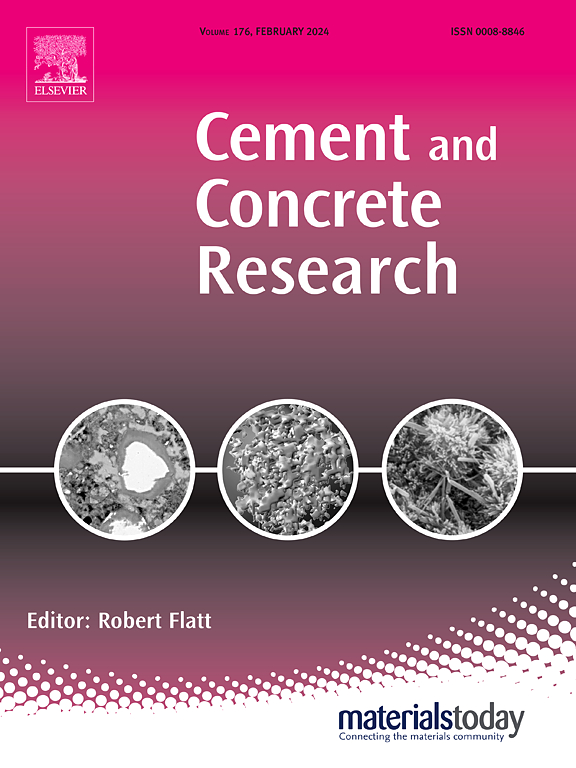CO2 uptake in calcium aluminosilicate materials
IF 13.1
1区 工程技术
Q1 CONSTRUCTION & BUILDING TECHNOLOGY
引用次数: 0
Abstract
CO2 mineralization has gained increasing attention as a strategy to reduce emissions from concrete production. This study investigates the carbonation potential of several calcium aluminosilicate (CAS) materials, model systems for understanding supplementary cementitious materials (SCMs). CAS materials were synthesized at temperatures ranging from 1000 °C to 1600 °C, producing structures ranging from partially crystalline to fully amorphous. X-ray diffraction and scanning electron microscopy were used to understand material physicochemical properties. Carbonation potential was assessed through CO2 uptake measurements using thermogravimetric analysis and Fourier-transform infrared spectroscopy, while SCM reactivity was evaluated via a modified R3 test. Results show that materials synthesized at 1000 °C and 1200 °C, containing unreacted oxides, portlandite, CA, and C2S, exhibited the highest CO2 uptake but the lowest reactivity as SCM. In contrast, fully amorphous glasses synthesized at 1600 °C demonstrated significantly higher SCM reactivity but minimal CO2 uptake. These findings highlight a fundamental trade-off between their reactivity and carbonation potential, governed by the degree of amorphization.钙铝硅酸盐材料对CO2的吸收
二氧化碳矿化作为一种减少混凝土生产排放的策略越来越受到关注。本研究探讨了几种硅酸铝钙(CAS)材料的碳化潜力,作为理解补充胶凝材料(SCMs)的模型系统。合成CAS材料的温度范围从1000℃到1600℃,产生的结构范围从部分结晶到完全非晶。利用x射线衍射和扫描电镜了解材料的物理化学性质。通过使用热重分析和傅里叶变换红外光谱测量CO2吸收来评估碳化势,而通过改进的R3测试来评估SCM的反应性。结果表明,在1000°C和1200°C合成的含未反应氧化物、硅酸盐、CA和C2S的材料,作为SCM的CO2吸收量最高,但反应性最低。相比之下,在1600°C下合成的全非晶玻璃显示出明显更高的SCM反应性,但二氧化碳吸收最小。这些发现强调了它们的反应性和碳酸化潜力之间的基本权衡,这是由非晶化程度决定的。
本文章由计算机程序翻译,如有差异,请以英文原文为准。
求助全文
约1分钟内获得全文
求助全文
来源期刊

Cement and Concrete Research
工程技术-材料科学:综合
CiteScore
20.90
自引率
12.30%
发文量
318
审稿时长
53 days
期刊介绍:
Cement and Concrete Research is dedicated to publishing top-notch research on the materials science and engineering of cement, cement composites, mortars, concrete, and related materials incorporating cement or other mineral binders. The journal prioritizes reporting significant findings in research on the properties and performance of cementitious materials. It also covers novel experimental techniques, the latest analytical and modeling methods, examination and diagnosis of actual cement and concrete structures, and the exploration of potential improvements in materials.
 求助内容:
求助内容: 应助结果提醒方式:
应助结果提醒方式:


